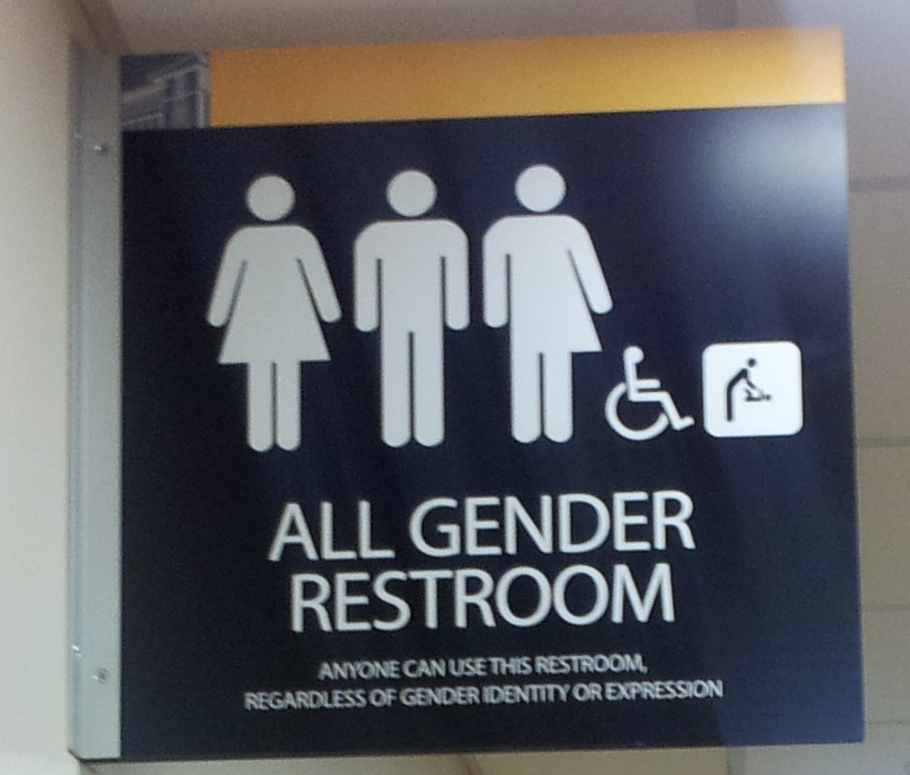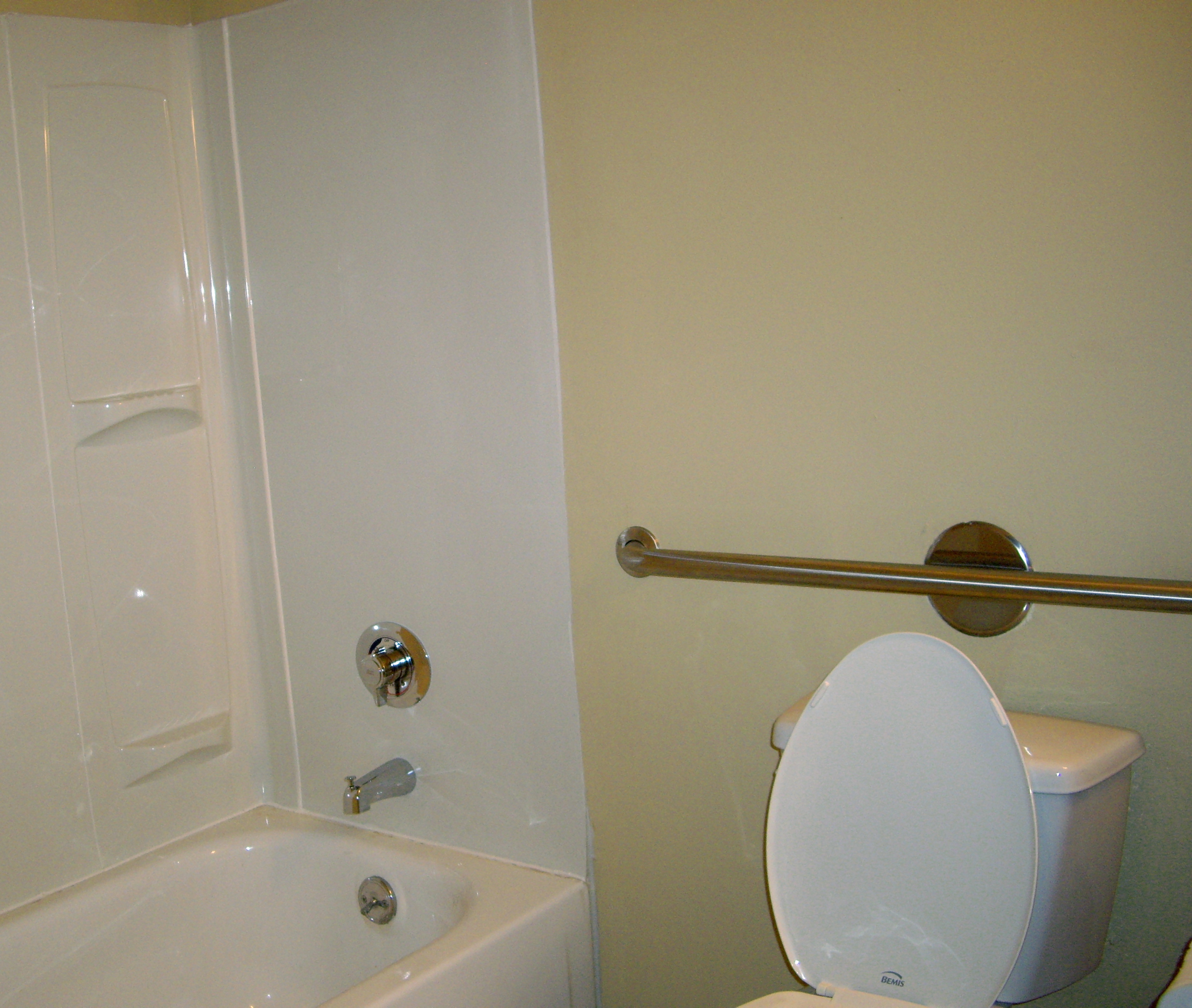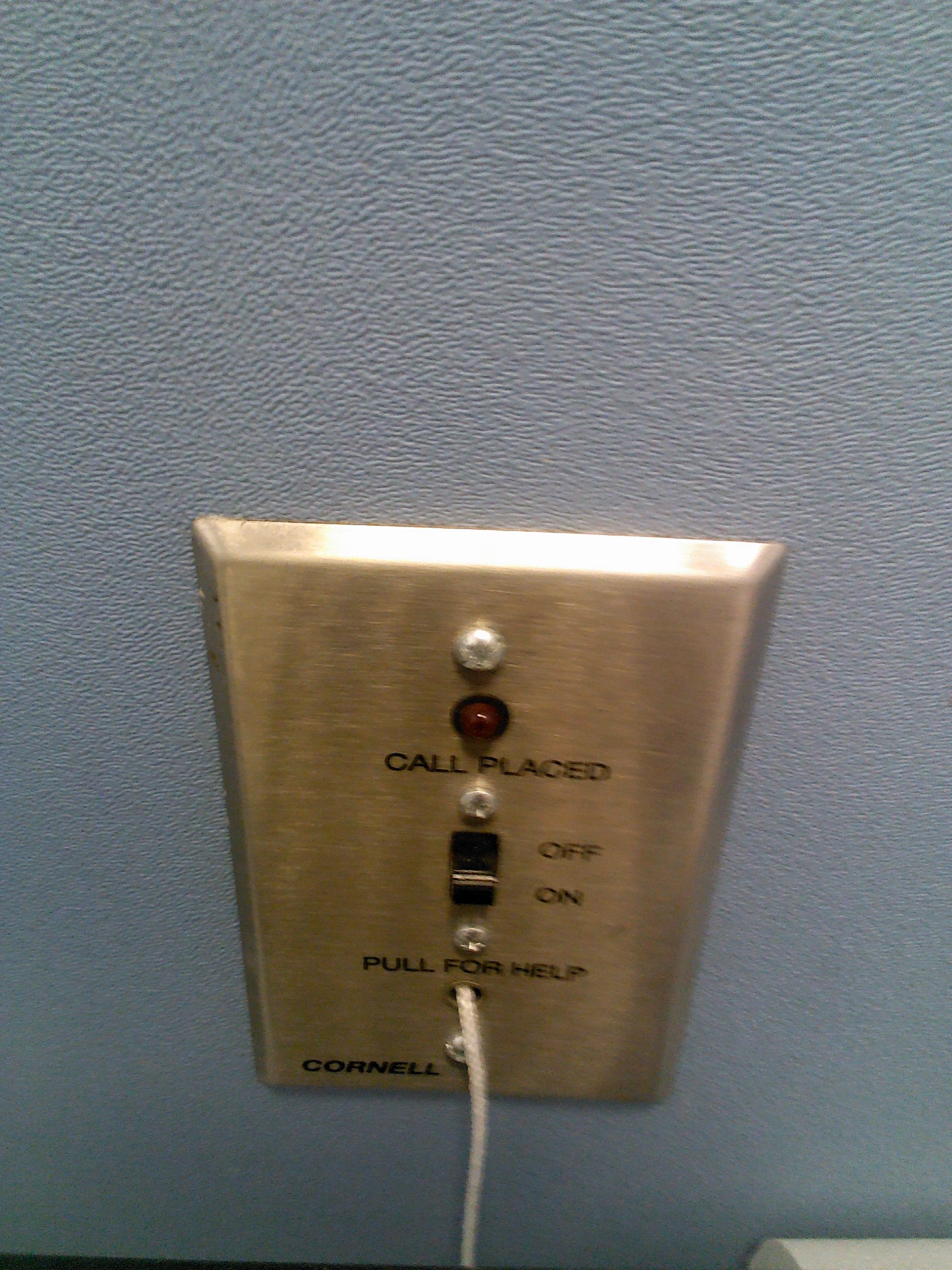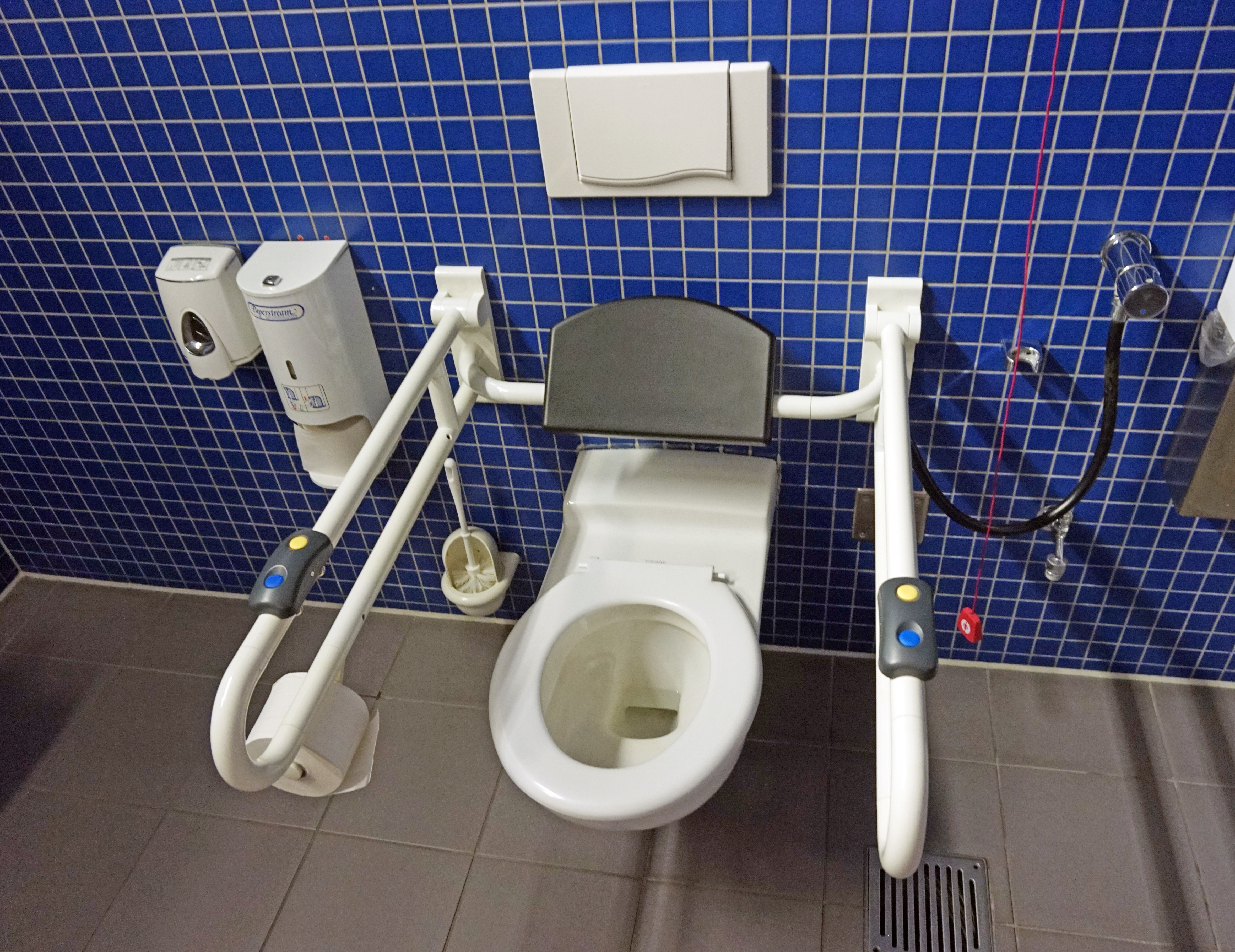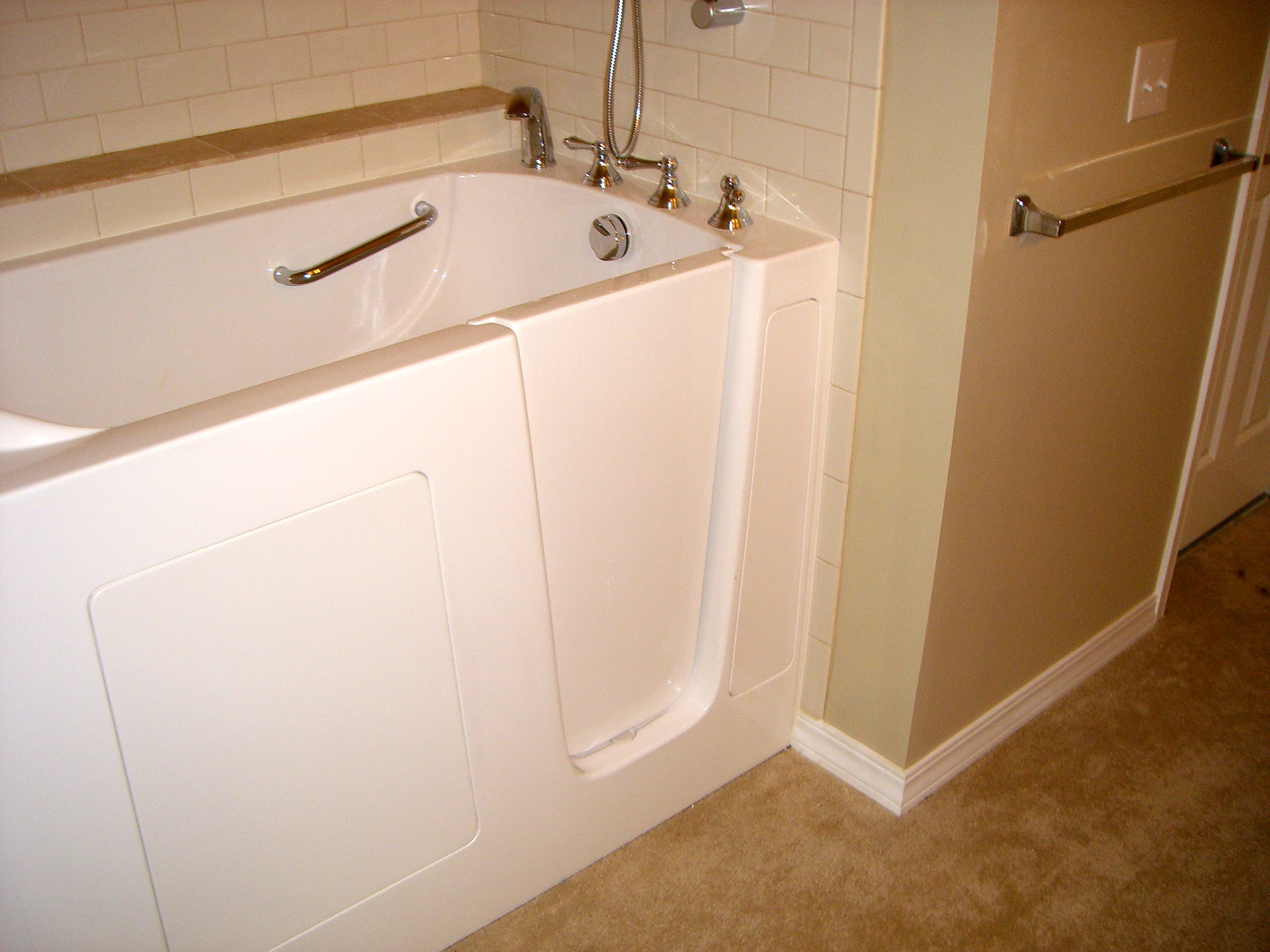|
Accessible Housing
Accessible housing refers to the construction or modification (such as through renovation or home modification) of housing to enable independent living for persons with disabilities. Accessibility is achieved through architectural design, but also by integrating accessibility features such as modified furniture, shelves and cupboards, or even electronic devices in the home. Canada In Canada, Flexhousing is a concept that encourages homeowners to make renovations that modify their house over time to meet changing accessibility needs. The concept supports the goals of enabling "homeowners to occupy a dwelling for longer periods of time, perhaps over their entire lifetimes, while adapting to changing circumstances and meeting a wide range of needs"; Universal Housing in the United States and Lifetime Homes in the United Kingdom are similar concepts. United Kingdom Great Britain applies the most widespread application of home access to date. In 1999, Parliament passed Section M, an ame ... [...More Info...] [...Related Items...] OR: [Wikipedia] [Google] [Baidu] |
Home Modification
A home, or domicile, is a space used as a permanent or semi-permanent residence for one or many humans, and sometimes various companion animals. It is a fully or semi sheltered space and can have both interior and exterior aspects to it. Homes provide sheltered spaces, for instance rooms, where domestic activity can be performed such as sleeping, preparing food, eating and hygiene as well as providing spaces for work and leisure such as remote working, studying and playing. Physical forms of homes can be static such as a house or an apartment, mobile such as a houseboat, trailer or yurt or digital such as virtual space. The aspect of ‘home’ can be considered across scales; from the micro scale showcasing the most intimate spaces of the individual dwelling and direct surrounding area to the macro scale of the geographic area such as town, village, city, country or planet. The concept of ‘home’ has been researched and theorized across disciplines – topics ranging ... [...More Info...] [...Related Items...] OR: [Wikipedia] [Google] [Baidu] |
Residential Elevator
An elevator or lift is a wire rope, cable-assisted, hydraulic cylinder-assisted, or roller-track assisted machine that vertically transports people or freight between floors, levels, or deck (building), decks of a building, watercraft, vessel, or other structure. They are typically powered by electric motors that drive traction cables and counterweight systems such as a hoist (device), hoist, although some pump hydraulic fluid to raise a cylindrical piston like a hydraulic jack, jack. In agriculture and manufacturing, an elevator is any type of conveyor device used to lift materials in a continuous stream into bins or silos. Several types exist, such as the chain and bucket elevator, grain auger screw conveyor using the principle of Archimedes' screw, or the chain and paddles or forks of hay elevators. Languages other than English, such as Japanese, may refer to elevators by loanwords based on either ''elevator'' or ''lift''. Due to wheelchair access laws, elevators are ... [...More Info...] [...Related Items...] OR: [Wikipedia] [Google] [Baidu] |
Visitability
Visitability is the design approach for new housing such that anyone who uses a wheelchair or other mobility device should be able to visit. A social visit requires the ability to get into the house, to pass through interior doorways, and enter a bathroom to use the toilet. Visitability stresses specific accessibility features from a social reform perspective, and counters social isolation. Description Newly constructed homes often contain the same major barriers as older ones: steps at every entrance and narrow interior doors, with the bathroom door usually the narrowest one in the house. Supporters want to change construction practices so that virtually all new homes, whether or not designated for people with mobility impairments, offer three specific accessibility features that will make it possible for most people to visit: # at least one zero-step entrance on an accessible route leading from a driveway or public sidewalk, # all interior doors being wide enough to allow a whe ... [...More Info...] [...Related Items...] OR: [Wikipedia] [Google] [Baidu] |
Unisex Public Toilet
Unisex public toilets (also referred to as gender-inclusive, gender-neutral, mixed-sex or all-gender, or without any prefix at all) are public toilets that are not separated by gender or sex. Unisex public toilets take different forms. They may be single occupancy facilities where only one single room or enclosure is provided, or multi-user facilities which are open to all and where users may either share sinks in an open area or each have their own sink in their private cubicle, stall or room. Unisex public toilets may either replace single-sex toilets or may be an addition to single-sex toilets. Unisex public toilets can be used by people of any sex or gender identity. Such toilet facilities can benefit transgender populations and people outside of the gender binary. Sex-separation in public toilets (also called sex segregation), as opposed to unisex toilets, is the separation of public toilets into male and female. This separation is sometimes enforced by local laws and buil ... [...More Info...] [...Related Items...] OR: [Wikipedia] [Google] [Baidu] |
Transfer Bench
{{unreferenced, date=August 2008 A transfer bench (also known as a showering bench, shower bench, or transfer chair) is a bath safety mobility device on which the user sits to get into a bathtub. The user usually sits on the bench, which straddles the side of the tub, and gradually slides from the outside to the inside of the tub. Tub transfer benches are used by people who have trouble getting over the tub wall or into the shower, either because of illness or disability. A smaller version without the longer bench extension, which sits wholly inside the tub, is known as a shower chair. Its handles are built-in within the chair's seat. Types Non-sliding A basic transfer bench typically consists of a backrest, long seat, and four legs. The legs inside the tub sometimes have plungers at their base that grip the tub's surface for stability. There are many different kinds, customized for the patient's needs. The size, (usually adjustable) height, and width can all vary. The ... [...More Info...] [...Related Items...] OR: [Wikipedia] [Google] [Baidu] |
Grab Bar
Grab bars are safety devices designed to enable a person to maintain balance, lessen fatigue while standing, hold some of their weight while maneuvering, or have something to grab onto in case of a slip or fall. A caregiver may use a grab bar to assist with transferring a patient from one place to another. A worker may use a grab bar to hold on to as he or she climbs, or in case of a fall. Construction Grab bars must bear high loads and sudden impacts, and most jurisdictions have building regulations specifying what loads they must bear. They are generally mounted to masonry walls or to the studs of stud walls (which may need to be specially strengthened). They can be mounted through drywall into a strong wooden wall stud or other structural member, but not mounted only on the drywall, as it will not bear the users' weight. Grab bars are made of metal, plastic, fiberglass, and composites. For wet areas such as bathrooms, the material must be waterproof. Stainless steel, nylon-co ... [...More Info...] [...Related Items...] OR: [Wikipedia] [Google] [Baidu] |
Bathroom Emergency Pullstring
A bathroom emergency pullstring is a cord found in some bathrooms and restrooms that can be pulled in the event of an emergency suffered by the bathroom's user, such as a fall or lock-in. United States federal law requires that in facilities with emergency cords, the system must work properly. They are often found in the bathrooms of healthcare facilities, such as hospitals, nursing homes, assisted livings, and doctor's offices, in places frequented by senior citizens or disabled people, such as senior centers, places of worship, or in senior housing, and in other places where trouble may arise, such as the lavatories on aircraft or trains and in hotels. These pull cords are part of a communication system where, when pulled, a light outside the bathroom flashes, which notifies a nurse or someone who is around to help the person in need. In addition to the flashing light, a buzzer or tone can be heard. Ideally, they are placed near the toilet or shower. Information For those living ... [...More Info...] [...Related Items...] OR: [Wikipedia] [Google] [Baidu] |
Americans With Disabilities Act Of 1990
The Americans with Disabilities Act of 1990 or ADA () is a civil rights law that prohibits discrimination based on disability. It affords similar protections against discrimination to Americans with disabilities as the Civil Rights Act of 1964, which made discrimination based on race, religion, sex, national origin, and other characteristics illegal, and later sexual orientation and gender identity. In addition, unlike the Civil Rights Act, the ADA also requires covered employers to provide reasonable accommodations to employees with disabilities, and imposes accessibility requirements on public accommodations. In 1986, the National Council on Disability had recommended the enactment of an Americans with Disabilities Act (ADA) and drafted the first version of the bill which was introduced in the House and Senate in 1988. A broad bipartisan coalition of legislators supported the ADA, while the bill was opposed by business interests (who argued the bill imposed costs on busine ... [...More Info...] [...Related Items...] OR: [Wikipedia] [Google] [Baidu] |
Accessible Toilet
Accessible toilets are toilets that have been specially designed to better accommodate people with physical disabilities. Persons with reduced mobility find them useful, as do those with weak legs, as a higher toilet bowl makes it easier for them to stand up. Additional measures that can be taken to add accessibility to a toilet include providing more space, adding grab bars to ease transfer to and from the toilet seat, and providing extra room for a caregiver if necessary. Some countries have requirements concerning the accessibility of public toilets. Toilets in private homes can be modified (retrofitted) to increase accessibility. Description Public toilets (aka restrooms) can present accessibility challenges for people with disabilities. For example, stalls may not be able to fit a wheelchair, and transferring between the wheelchair and the toilet seat may pose a challenge. Accessible toilets are designed to address these issues by providing more space and bars for users ... [...More Info...] [...Related Items...] OR: [Wikipedia] [Google] [Baidu] |
Accessible Bathtub
Accessible bathtubs are bathtubs that can be used by people with limited mobility or the disabled. A bathtub can be made accessible for some people by the addition of grab bars or hand grips, or through the use of lifts that lower and raise the bather in the water. Other bathtubs have been specially designed for accessibility. These may include walk-in bathtubs, tubs with built-in transfer benches, or, more recently, tubs with raised beds and sliding doors to allow for a seated transfer. Many accessible bathtubs are available with hydrotherapy or whirlpool features, internal grab bars, anti-slip floors and seats, and handheld showerheads that, in some cases, can also be wall mounted to enable a person to take a standing shower. Walk-in bathtubs Walk-in bathtubs have either an inward-opening or cap-like fitted door, descending to near ground level to allow a person to enter the tub without climbing over its side; the door is self-sealing. Most walk-in bathtubs also have a cha ... [...More Info...] [...Related Items...] OR: [Wikipedia] [Google] [Baidu] |
Alzheimer Disease
Alzheimer's disease (AD) is a neurodegenerative disease that usually starts slowly and progressively worsens. It is the cause of 60–70% of cases of dementia. The most common early symptom is difficulty in remembering recent events. As the disease advances, symptoms can include problems with language, disorientation (including easily getting lost), mood swings, loss of motivation, self-neglect, and behavioral issues. As a person's condition declines, they often withdraw from family and society. Gradually, bodily functions are lost, ultimately leading to death. Although the speed of progression can vary, the typical life expectancy following diagnosis is three to nine years. The cause of Alzheimer's disease is poorly understood. There are many environmental and genetic risk factors associated with its development. The strongest genetic risk factor is from an allele of APOE. Other risk factors include a history of head injury, clinical depression, and high blood pressure ... [...More Info...] [...Related Items...] OR: [Wikipedia] [Google] [Baidu] |
Toilet Seat Riser
Toilet seat risers, toilet risers, or raised toilet seats are assistive technology devices to improve the accessibility of toilets to older people or those with disabilities. They can aid in transfer from wheelchairs, and may help prevent falls. Inappropriately high risers may actually increase fall risk. Some people may find plastic risers to be unattractive or carry a stigma. They may also interfere with the toilet habits of other users. See also *Grab bar * Accessibility of toilets *Home modifications *Occupational Therapy *Assistive Technology Assistive technology (AT) is a term for assistive, adaptive, and rehabilitative devices for people with disabilities and the elderly. Disabled people often have difficulty performing activities of daily living (ADLs) independently, or even with ... References Toilets Assistive technology {{disability-stub ... [...More Info...] [...Related Items...] OR: [Wikipedia] [Google] [Baidu] |


